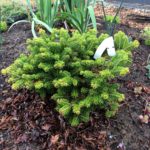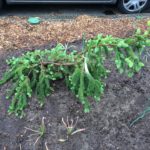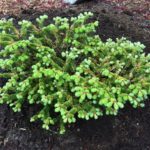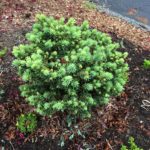Today I inoculated half a five-gallon bucket full of espresso grounds with about 50g of oyster mushrooms, using these instructions.
If I were really going for it, I would have been a whole lot more careful with sterile technique. (Espresso grounds are more or less steam-pasteurized, but I didn’t bother sterilizing the bucket.) As it is, part of what I want to learn is just how slapdash I can be and still get some kind of useful result. Right now, I’m not really interested in going into the oyster mushroom business. I’m in it for the compost, primarily. In fact, I might actually prefer that it not fruit: people do become allergic to Pleurotus spores pretty easily, or so I’ve read, and if the mushroom is as aggressive as I hope, it could be one of our major compost digesters. We could be growing a lot of this stuff.
According to Stamets, oyster mushrooms do a good job of breaking down caffeine. That’s my main interest at the moment. I’m composting a whole lot of espresso grounds on the property here, and I’ve got first-hand experience (Whee!!) with how much caffeine is still in the grounds. If I break up the espresso pucks with my hands, I can absorb enough of the residual caffeine through my skin that I become wired. So I’ve wondered about the wisdom of dumping that much alkaloid into my little toy ecosystem here. In the plant, it functions as a pesticide and inhibits the germination of other coffee seedlings. What’s its effect, in my soil, after composting, with different insects and plants? I don’t know, but pesticides and germination inhibitors sound like something to be a little concerned about, given the quantity.
It’s been interesting to play with these grounds from Blue Saucer Espresso. I’d say we’re getting about a garbage can’s worth every two weeks. At first I thought I’d just incorporate it directly into the ground, but there’s just too much material to make that work well unless I’m careful; it tends to crust up unless I work it in very well and don’t use too much of it. Digging it more deeply into the most fertile bed has worked better, but still, I’d need a lot of room to do it all with sheet composting. I’ve got some of it in a “Garden Gourmet” digester that we got free from the side of the road; that filled up fast (three weeks!) and has been getting impressively hot — perhaps verging on too hot. My latest compost heap is a more traditional heap-on-the-ground style with generous helpings of dirt to moderate the temperature down and, I hope, suck up some of the nitrogen that might otherwise gas off.
I’ve also been running a worm bin with a lot of coffee and seeing how that goes. If I build a bigger one, it may be a good way to re-use the old chicken bedding, too. It’s been a few months now since I started the worms on the mostly-coffee diet. They weren’t looking so happy for a while, but they’re looking a little better these days; I may be getting a population of adapted worms.
In all these cases — especially when worms are involved at all — I should probably check the pH and find out if it needs adjustment. I’ve been dropping anvil-like hints about getting a pH meter for my birthday.
I sure hope this works well, because our native soil here is horrible. It’s slightly dusty sand on top of a layer of clay with a lot of rocks in. It needs a lot of humus, and I’m not sure we’re ever going to be all that successful in growing high-demand vegetables in it. (I tried onions this year, and they grew to the size of ping-pong balls. And that was in a relatively well-established bed.) Dragging home all these coffee grounds reminds me of women I’ve read about who lived on rocky, barren Scottish outer islands and lugged seaweed up from the beach to build their garden soil almost from scratch.
ETA: The mycological plot thickens. It turns out that P. ostreatus (and I’m assuming that’s what I’ve got here, though apparently Pleurotus spp can look a lot alike) can inhibit plant growth. (Mycelium Running pg. 189) Possibly this is not what I want to be using alone as my big coffee-ground digester for building garden soil. So I’m left with questions: how persistent is this effect? What it the spent compost is further composted? Can I grow something else, such as Hypsizygus ulmarius, on coffee grounds?




